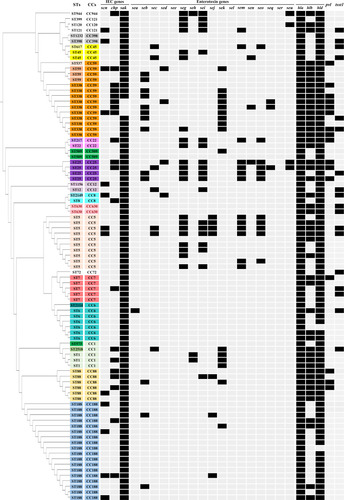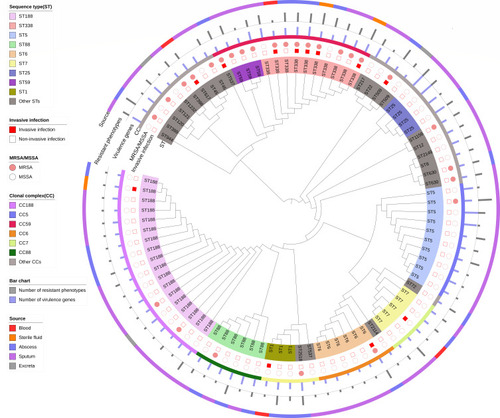Figures & data
Table 1 Phenotypic and Molecular Characteristics of Invasive and Non-Invasive S. aureus Isolates
Figure 1 Clonal dendrogram and detailed molecular characteristics of 89 ST-typeable S. aureus isolates.

Figure 2 Correspondence analysis for testing the relationship between CCs and resistance patterns (A) or the number of virulence genes (B) of S. aureus isolates.

Figure 3 Clonal dendrogram for describing the relationship between genotypes and detailed phenotype–genotype characteristics of 89 ST-typeable S. aureus isolates.

Table 2 Genotypic and Phenotypic Characteristics of 13 Invasive S. aureus Isolates
Figure 4 Importance rank of phenotypic and molecular characteristics influencing invasive S. aureus isolates.

